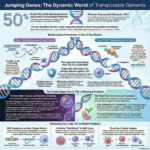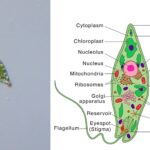What is oxidative phosphorylation?
What is oxidative phosphorylation?
Please login to submit an answer.
Oxidative phosphorylation is the metabolic process by which cells synthesize ATP using energy released from the redox reactions of the electron transport chain linked to oxygen reduction
It occurs on the inner mitochondrial membrane in eukaryotes and the plasma membrane in prokaryotes, where protein complexes I–IV transfer electrons from NADH and FADH₂ to O₂, pumping protons into the intermembrane space
The proton gradient established by electron flow creates an electrochemical potential (proton‐motive force) that drives protons back through ATP synthase (complex V), catalyzing ADP phosphorylation to ATP through a rotary motor mechanism
Peter D. Mitchell proposed the chemiosmotic hypothesis in 1961, uniting electron transport, proton pumping, and ATP synthesis into a single framework, for which he received the Nobel Prize in Chemistry in 1978
Oxidative phosphorylation is the principal source of ATP in aerobic organisms, yielding approximately 26–34 ATP molecules per glucose molecule—far exceeding the 2 ATP from glycolysis alone
Key components include:
Complex I (NADH dehydrogenase) and complex II (succinate dehydrogenase) feeding electrons into ubiquinone
Complex III (cytochrome bc₁) transferring electrons to cytochrome c
Complex IV (cytochrome c oxidase) reducing O₂ to H₂O and pumping additional protons
ATP synthase (complex V) harnessing the proton‐motive force for ATP production
Regulation and modulation:
Uncoupling agents (e.g., 2,4‐dinitrophenol) dissipate the proton gradient, releasing energy as heat rather than ATP
Specific inhibitors such as rotenone, cyanide, and oligomycin block individual complexes, halting ATP synthesis and electron flow
Physiological significance:
Critical for high‐energy demanding processes (muscle contraction, active transport, biosynthesis)
Source of reactive oxygen species (ROS) when electrons prematurely reduce oxygen, contributing to oxidative stress and aging
Integration with metabolism: intermediates and reducing equivalents from glycolysis, β‐oxidation, and the citric acid cycle feed into oxidative phosphorylation, linking catabolic and anabolic pathways for cellular homeostasis
- Share on Facebook
- Share on Twitter
- Share on LinkedIn
Helpful: 0%




